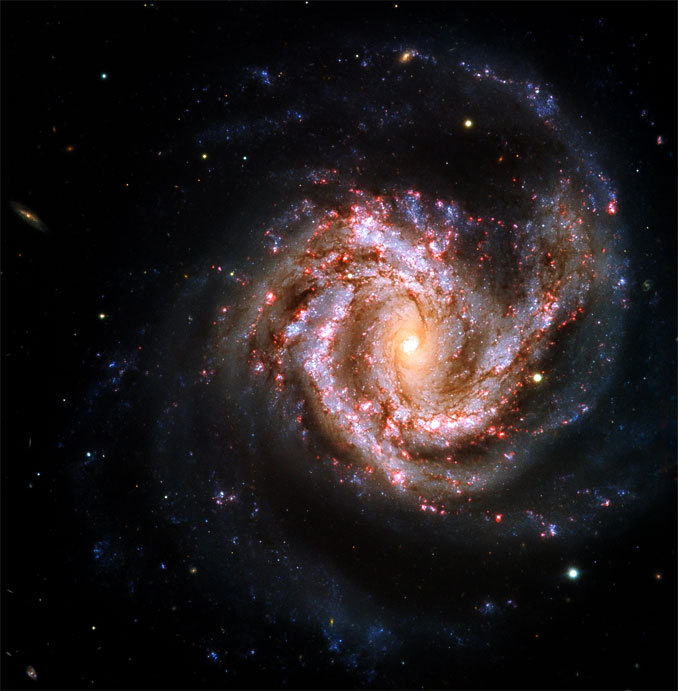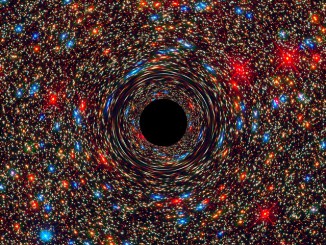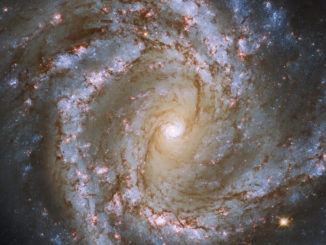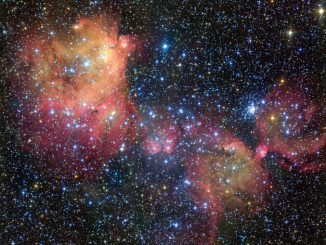The face-on spiral galaxy M61 is one of the largest members of the Virgo Cluster, an assembly of more than a thousand galaxies at the centre of the even more expansive Virgo Supercluster. Discovered in 1779 by Barnaba Oriani, just six days before Charles Messier realised it wasn’t a comet, M61 is a familiar target for professional and amateur astronomers alike, home to a supermassive black hole at the heart of a dense stellar nucleus. Located 50 million light years from the Milky Way in the constellation Virgo, the galaxy’s spiral arms are populated by billions of stars, the result of rapid star formation. This image was captured by the European Southern Observatory’s Cosmic Gems Programme.




